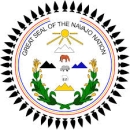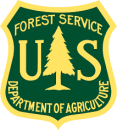Location
States
ArizonaEcosystem
ForestIntroduction
Historical fire suppression practices and the increasingly severe effects of climate change climate change
Climate change includes both global warming driven by human-induced emissions of greenhouse gases and the resulting large-scale shifts in weather patterns. Though there have been previous periods of climatic change, since the mid-20th century humans have had an unprecedented impact on Earth's climate system and caused change on a global scale.
Learn more about climate change have increased the risk of large, high-intensity wildfires in ponderosa pine (Pinus ponderosa) forests across northern Arizona (Schussman et al., 2006). These forests are adapted to frequent low-intensity burns. Large high-intensity fires negatively impact forest health and threaten communities within the wildland urban interface (WUI) and beyond (Owen, 2019).
To restore the health of these forests, help them be more fire- and climate- adapted, and reduce the risk of large high-intensity fire, the U.S. Forest Service (USFS) engages in a wide range of restoration projects on National Forest System (NFS) lands through initiatives such as the Four Forest Restoration Initiative (4FRI). A common restoration action is thinning dense stands of trees by removing small diameter and low value wood. Thinning reduces risk of high-intensity fire and helps forests move towards long-term desired conditions where low-intensity fire can safely return to these fire-adapted forests. The wood from thinning projects is usually too small for commercial value and is often consolidated into piles for burning when conditions are safe.
The Navajo Nation and Hopi Tribe are located near numerous thinning projects occurring on NFS land. Many USFS thinning projects take place on their ancestral homelands and contain sites of cultural and spiritual significance. Indigenous Peoples, including the Navajo Nation and Hopi Tribe have harvested firewood and managed these landscapes with cultural burning since time immemorial. These practices were interrupted with European colonization. For years, Navajo Nation and Hopi Tribe members relied on the Kayenta Coal Mine to support their fuel needs. However, when the mine closed in 2019, Tribal members increasingly turned to firewood to heat their homes.
The Wood for Life partnership (WFL) was developed as a collaborative effort between a network of organizations in northern Arizona including the USFS, Navajo Nation, Hopi Tribe, National Forest Foundation, Ancestral Lands Conservation Corps (ALCC), Ecological Restoration Institute (ERI), The Nature Conservancy (TNC), and tribal-based nonprofits and partners to respond to the need for firewood by making wood from forest restoration treatments on NFS lands available to communities on the Navajo Nation and Hopi Tribal lands.
Key Issues Addressed
The warmer and drier conditions climate change has created in the Southwest shorten the windows where managers can safely conduct burns. Combined with increased fuel loads and heightened fire risk, these shortened burn windows make burning piles of thinned unmarketable fuelwood challenging. Piles of thinned wood burned in the winter have reignited in the spring when conditions were unusually dry and warm. While the vast majority of pile burns occur safely, managers are increasingly turning to new approaches to reducing fuel loads after thinning that are adapted to this new climate reality where warm dry spring conditions are increasingly common, especially in high-risk areas like the WUI.
Following the closure of the Kayenta Coal Mine, Navajo Nation and Hopi Tribe members increasingly relied on firewood for heating and cooking. There is an opportunity to provide unmarketable wood from thinning projects to Navajo Nation and Hopi Tribe members. This would increase Tribal energy sovereignty and reduce fuel costs for Tribal Members. However, the USFS has limited policy options to supply large quantities of firewood to the Navajo Nation and Hopi Tribe.
The amount of firewood that can be supplied, transported, and processed is limited by available capacity of the many partners involved in Wood for Life. Transporting and supplying firewood requires vehicles, equipment, and funding that are in limited supply. Overcoming this limited capacity to make wood available to Navajo Nation and Hopi Tribe for heating, cooking, and ceremonial use, requires multiple partners leveraging a diverse array of funding sources.
Project Goals
- Remove thinned fuelwood from restoration projects in the WUI to reduce the risk of wildfire from burning this wood in place as slash piles. Make this removed wood available for Navajo Nation and Hopi Tribe members to use for heating, cooking, and ceremonial purposes.
- Overcome policy challenges that prevent USFS from supplying wood from thinning projects on National Forest Lands to Navajo Nation and Hopi Tribe members.
- Develop and strengthen relationships with a variety of partner organizations to increase capacity and funding for supplying, delivering, accessing, and processing wood from thinning projects. Support shared stewardship goals between Federal land management agencies and Tribal Nations by providing opportunities for the Navajo Nation and Hopi Tribe to reconnect with their ancestral lands through access to firewood and stewardship agreements.
Project Highlights
- Making Firewood Available to Navajo Nation and Hopi Tribe: Forest thinning treatments administered by USFS and through agreements with partners not only reduce the risk of severe wildfire in the WUI, but have provided approximately 10,000 cords of firewood to the Navajo Nation and Hopi Tribe members. Typical households use an average of 4.9 cord of firewood per year at a cost of approximately $2,577/yr (ERI Publication in Press). The firewood from WFL can help offset these costs for community members.
- Climate Adapted Management - Full Fiber Removal: Complete removal of slash from forest thinning projects, referred to as“full-fiber removal”, reduces wildfire risks in the WUI under increasingly short and unpredictable burn windows. The need to remove this wood from the land facilitated the use of this thinned wood for firewood, building materials, ceremonial products, and more. Although more expensive than burning, full fiber removal is much less expensive than wildfire suppression efforts. Additionally, full fiber removal avoids the need for USFS staff to return and conduct pile burns after thinning, freeing up time for other restoration projects.
- Overcoming Policy Hurdles to Supplying Wood: WFL used several policy mechanisms to provide firewood from thinning projects to Navajo Nation and Hopi Tribe members including: free tags program (36 CFR 223.3), stewardship agreements with non-federal partners, and free use authorities (36 CFR 223.5) (Stortz and Colavito, 2021).
- Partnerships with Local Organizations for Wood Distribution: By partnering with local organizations including Navajo Nation Chapter Houses, Hopi Villages, Ancestral Lands Conservation Corp crews, Chizh for Cheii, Koho 4 Hopi and others, WFL created wood distribution sites and implemented unique approaches to connect community members with wood including the use of social media and home delivery that were tailored for each community.
- Strengthening Relationships with Stewardship Agreements: One of the first WFL thinning projects was completed in Hart Prairie by the Hopi Ancestral Lands Crew. Hart Prairie is a culturally significant location for many Tribal Nations in the region. WFL created an opportunity for shared stewardship where ALCC carried out restoration projects in a culturally significant location. This meadow restoration project provided 349 cords of wood.
Lessons Learned
Although the initial need from the Navajo Nation and Hopi Tribe was for firewood to heat homes after closure of the coal mine, wood is also needed for ceremonies, cooking, and building. By working closely with community partners on Navajo Nation and Hopi Tribe, Wood for Life has been able to provide a variety of forest products for community needs, including pine needles and wood chips for livestock bedding, wooden beams for construction and repairs in traditional homes, use for ceremonial purposes, and more.
Wood for Life used stewardship agreements to overcome policy barriers that prevented the distribution of free firewood. However, these agreements require a partner with the necessary capacity, funding, and objectives in place to be successful. Wood for Life partnered with the National Forest Foundation (NFF) and the City of Flagstaff for initial stewardship agreements. These agreements allowed for the transfer of ownership of forest products from USFS to partners who could freely distribute the wood to Tribal members. These stewardship agreements meet agency goals and community needs by reducing wildfire risk and responding to the expressed needs of Navajo Nation and Hopi Tribe members for firewood. The use of stewardship agreements has expanded the scale of WFL.
The WFL partnership used a variety of policy mechanisms to provide the wood supply for the project, starting small and with existing mechanisms that allowed harvesting (e.g. CFRs 223.3 & 223.5), and scaling to larger and more complex agreements as the project gained momentum (e.g. Stewardship Agreements and Supplemental Project Agreements). During the COVID-19 pandemic and in response to wildfire, certain emergency CFRs allowed agency leadership to increase the scale and pace of firewood supply from National Forest lands to Tribal members (Wood For Life Playbook). The Bipartisan Infrastructure Law Bipartisan Infrastructure Law
The Bipartisan Infrastructure Law (BIL) is a once-in-a-generation investment in the nation’s infrastructure and economic competitiveness. We were directly appropriated $455 million over five years in BIL funds for programs related to the President’s America the Beautiful initiative.
Learn more about Bipartisan Infrastructure Law provided funding for partnerships with Youth Conservation Corps such as the Ancestral Lands Conservation Corps. While the WFL partnership utilized several innovative mechanisms to overcome barriers, there is more work to be done to include indigenous voices in policy making, create more straightforward policies for indigenous biomass use, and increase local tribal capacity through agreements.
Next Steps
- Engage with USFS land managers in the Coconino, San Juan, Kaibab, Santa Fe, Boise, Payette, Manti la Sal, and Inyo National Forests to support the implementation of similar WFL projects
- Increase the amount of wood WFL supplies to contribute to the ceremonial and housing needs of the Navajo Nation and Hopi Tribe. Establish additional wood distribution sites at easily accessible locations for Navajo Nation and Hopi Tribe members
- Identify long-term funding opportunities through the US Department of Agriculture and ALCC to support the future transportation and distribution of firewood to Tribal members
Funding Partners
- National Forest Foundation
- United States Forest Service
- Chizh for Cheii
- Ancestral Lands Conservation Corps
- The Nature Conservancy
- Hopi Tribe
- Conservation Legacy Ancestral Lands
- Red Feather Development Group
- Navajo Nation
Resources
The Wood for Life Playbook: The Wood for Life “Playbook”, linked in the resources section, contains a wealth of information that can help partnerships implement similar programs in their geographies.
- Ecological Restoration Institute (2021). “Implications for Tribal Forest Management Under New Federal Legislative Directions.”
- Wood for Life (2021). “Wood for Life: Partnership Statement.”
- Stortz and Colavito (2021). “Wood for Life | A Tribal Firewood Partnership in Northern Arizona.”
- Wood For Life FAQ by National Forest Foundation
- National Forest Foundation’s Northern Arizona Wood for Life Partnership page
- Wood for Life Playbook from USDA Forest Service
- Indian Health Service (n.d.) “Navajo Nation.”
- The Hopi Tribe (2023). “Welcome to the Hopi Tribe.”
- National Park Service (2015). “Bryce Canyon | Ponderosa Pine.”
- Suzanne Marie Owen (2019). “Tree regeneration following large wildfires in southwestern ponderosa pine forests.”
- US Forest Service (n.d.). “What is the Wildland Urban Interface (WUI)?”
- Heather Schussman et. al (2006). “Historic Fire Return Intervals For Arizona and New Mexico: A Regional Perspective For Southwestern Land Managers.”
Contacts
- Jacob Dahlin, Forest Service: jacob.dahlin@usda.gov
- Jeanne Stevens, Forest Service: jeanne.stevens@usda.gov
- Nicholas Mustoe, Forest Service: nicholas.mustoe@usda.gov
CART Lead Author
Liam Thompson, CART Student Author, University of Oklahoma
Suggested Citation
Thompson, L., C., Léger, A., and Jewell, K. (2024). “Wood for Life, a Collaborative Partnership to Provide Wood to the Navajo Nation and Hopi Tribe.” CART. Retrieved from https://www.fws.gov/project/wood-life.










